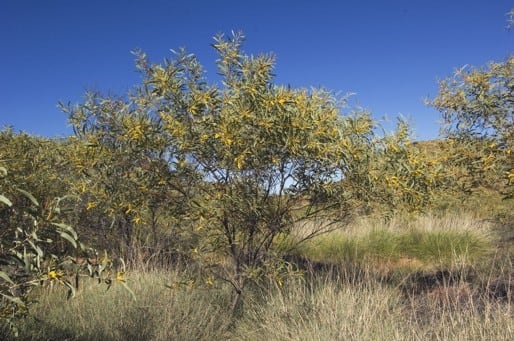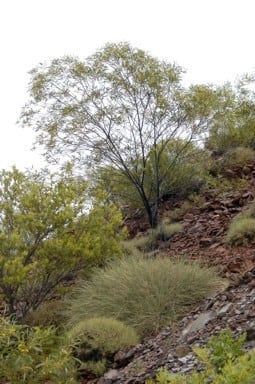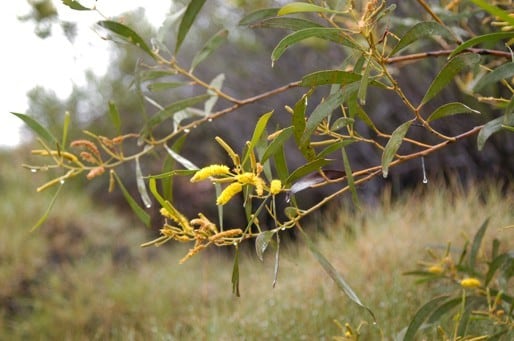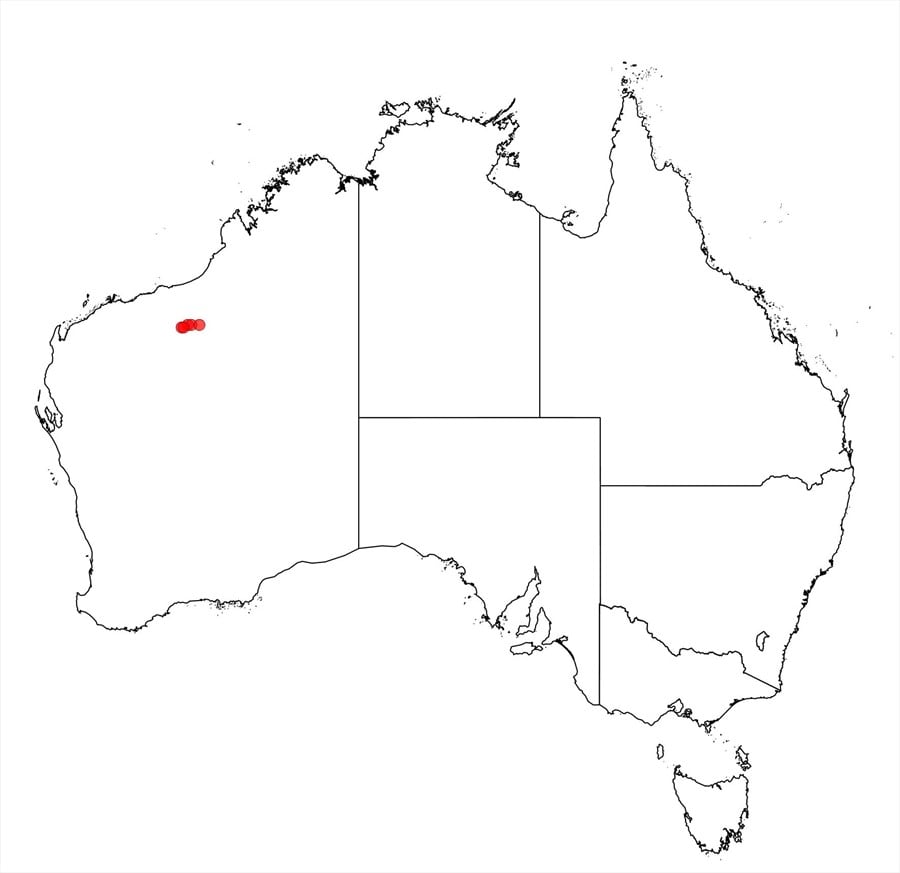Acacia fecunda Maslin
WATTLE
Acacias of Australia
Common Name
Mosquito Creek Wattle
Family
Fabaceae
Distribution
Restricted to the Pilbara region in north-western W.A. where known from a few disjunct populations E of Nullagine.
Description
Shrub 1.5–3 m high, obconic with spreading, ±open crowns. Bark smooth, orange or grey. Branchlets slender, terete except angled at extremities, minutely and densely white-hairy. Phyllodes wide-spreading to ascending, narrowly elliptic to oblanceolate, straight and dimidiate to shallowly or moderately falcate, 8–12 cm long, 10–15 mm wide, narrowed at base, green or bluish green; finely multistriate with 2 sub-central nerves more evident than the rest and sometimes confluent with one another near base; minor nerves closely parallel, sometimes anastomosing; pulvinus distinct, 4–5 mm long, orange (fresh). Inflorescences simple, 2 per axil; peduncles 7–12 mm long, sub-stout, glabrous or minutely hairy; spikes 2–4 (–4.5) cm long, 5–6 mm diam., dense, light golden. Flowers 5-merous; calyx 1/2 to 3/5 length of corolla, very shortly divided; petals 1.5 mm long. Pods prolific, linear, rounded over and slightly constricted between seeds, 7–9 cm long, 3–4 mm wide, firmly chartaceous to very thinly crustaceous, brown, ±glabrous to minutely appressed-hairy. Seeds longitudinal, oblong to oblong-elliptic, 3.5–4 mm long, dark brown; aril white.
Phenology
Flowers Apr.–June.
Habitat
Grows in areas under-laid by sedimentary rocks and appears to favour water-gaining sites.
Specimens
W.A.: E of Nullagine [precise localities withheld for conservation reasons], J.S.Beard 4605 (PERTH); B.R.Maslin 8510 (AD, CANB, DNA, K, MEL, NSW, NY, PERTH); B.R.Maslin 8884 (PERTH); S.van Leeuwen 5224 (NSW, PERTH).
Notes
Plants flower from an early age; they regenerate from seed following fire or other disturbance and may form dense roadside populations.
Most closely related to the more northerly and widespread species A. gonoclada which differs in having stouter, acutely angled branchlets, often shallowly incurved (never recurved) phyllodes and generally shorter peduncles, spikes and pods. Superficially similar to A. elachantha which has densely silver- or yellow-hairy new shoots, 3 prominent phyllode nerves with widely spaced anastomosing minor nerves and seeds with yellow arils, and A. hamersleyensis which has subglaucous to glaucous phyllodes, often larger spikes and broader, hairy pods with oblique seeds.
FOA Reference
Flora of Australia Project
Author
J.Reid, B.R.Maslin
This identification key and fact sheets are available as a mobile application:
URL: https://apps.lucidcentral.org/wattle/
© Copyright 2018. All rights reserved.













